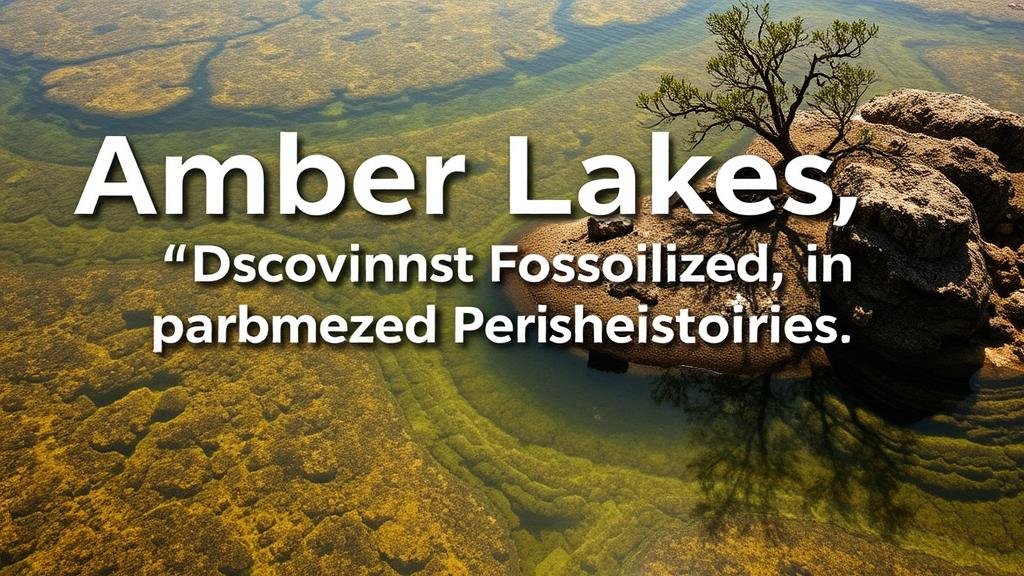Amber Lakes: Discovering Fossilized Resin in Submerged Prehistoric Landscapes
Amber Lakes: Discovering Fossilized Resin in Submerged Prehistoric Landscapes
Amber, often celebrated for its warm hues and captivating aesthetic appeal, is more than just a beautiful gemstone. It is fossilized tree resin that offers remarkable insights into prehistoric ecosystems. For rockhounds and mineral collectors, exploring amber lakes is a unique avenue to uncover natural history and biological remnants trapped within time. This article delves into the formation, collection, and significance of amber found in submerged prehistoric landscapes.
The Science Behind Amber Formation
Amber originates from the resin produced by trees, primarily conifers, which has fossilized over millions of years. The process involves several stages:
- The resin flows from the bark, acting as a protective layer for the tree.
- As it hardens, the resin can trap various organic materials, including plant matter, insects, and other small creatures.
- Over geological time, the resin undergoes polymerization, turning into amber due to high pressure and temperature conditions.
This transformation can take anywhere from 20 million to 100 million years, depending on the type of tree and environmental conditions. The most renowned amber deposits are from the Baltic region, particularly the Kaliningrad area of Russia, where amber-rich sediments cover approximately 120,000 square kilometers.
Amber lakes refer to submerged prehistoric landscapes where significant amber deposits are found. e lakes often formed in low-lying areas where resin-rich trees once grew, and as the environment changed, water accumulated over them.
Studies indicate that these underwater amber deposits can be incredibly rich. For example, a single kilogram of amber can contain thousands of inclusions, revealing ancient life forms that provide invaluable data for paleontologists. In certain regions, such as the Miocene deposits found in the Dominican Republic, amber can exceed 25% purity, making these submerged sites ideal for collectors.
What to Look For: Identifying Quality Amber
For rockhounds and enthusiasts, identifying high-quality amber is crucial when exploring amber lakes. Here are key features to consider:
- Color: Amber can vary widely, from deep yellows to rich browns, and even rare shades like green or blue.
- Transparency: Genuine amber is semi-transparent to translucent. Cloudy or opaque materials may indicate fakes or altercations.
- Inclusions: Amber with well-preserved inclusions, such as insects or plant material, is often prized for its novelty and historical significance.
Also, collectors should look for natural imperfections or bubble formations, as these can further authenticate the piece as genuine amber.
Practical Tips for Collectors
Engaging with amber lakes can be both rewarding and challenging for collectors. Here are practical tips for successful exploration:
- Research: Before heading out, familiarize yourself with the specific locations known for amber deposits. Local geological surveys or mineral clubs often provide insights.
- Tools: Equip yourself with essential tools such as a shovel, trowel, and sediment sieves. A UV flashlight can also help identify amber since it fluoresces under UV light.
- Legality: Always check local regulations regarding collecting in designated areas. Some regions may have restrictions to protect these valuable ecosystems.
Conclusion: The Allure of Amber
Amber lakes offer a fascinating glimpse into Earths history, with the potential to unravel mysteries of ancient ecosystems and the organisms that thrived within them. For collectors and enthusiasts, these sites are not merely sources of beautiful gemstones; they are corridors to the past, housing ancient relics within their depths. By understanding the formation process, identifying quality specimens, and following ethical collecting practices, rockhounds can enjoy a rewarding experience while contributing to the ongoing study of prehistoric life.
As you embark on your journey to discover amber, remember that each piece tells a story, and your efforts may uncover a chapter of Earths vast history.



